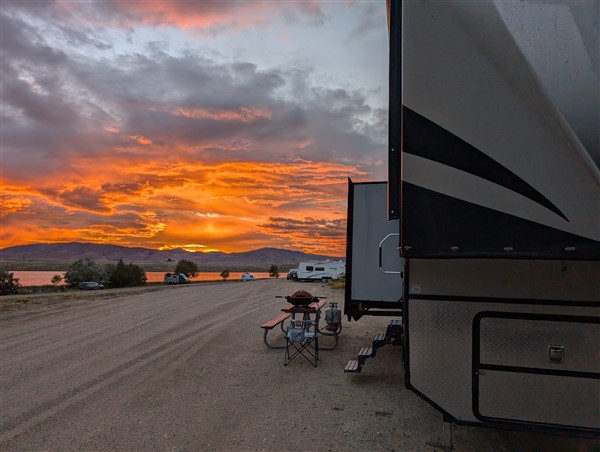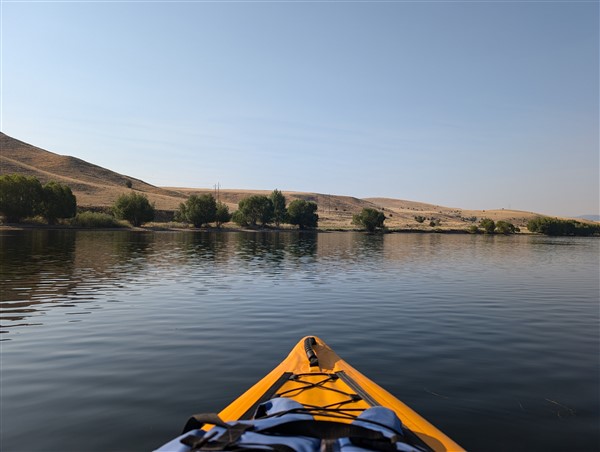Boondocking with your RV camper (of any type) is WORTH THE EFFORT!
Considering how things are heading in our nation, the ability to survive (and thrive) in remote areas is definitely something I’ve spent lots of time thinking about (and taking steps towards.) This post ties in with an earlier one titled “Should your RV be part of your bug out plan?” I encourage you to check it out, as well as the information that follows…
A few introductory thoughts about Dry Camping with your RV…
- In general, boondocking with your RV costs FAR less than staying at full service campgrounds
- There’s almost ALWAYS great campsites to be found! Forget about making advance reservations (in most cases)
- Boondocking sites are often the most scenic sites you’ll find.
- You do NOT have to travel miles and miles up a gravel, washboarded road to find a good campsite when dry camping.
- Your campsite is most often a good distance away (NOT inches!) from your neighbors campsite

Finding a good (or GREAT) campsite for you and your RV
It all starts with research! One of my favorite tools is Allstays. It is not free, and is best viewed on a larger screen (laptop, iPad, desktop, etc.) but their system shows almost ALL camping options in any given region. There are details in their system that shows you each type of campground or camping area (eg: private campground, National Forest Service designated camping area, dispersed camping, BLM (bureau of land management) camping area, National Park, State Park, County Park, and so on.)
This post shows how I use the Allstays interface when searching a region. In the “Kettle Falls” section, you’ll see a couple of maps with several different icons, each represents a different type of campground. You can click on each icon to learn more about that site. Information provided includes location, contact info, website link (if available), and even reviews and fees. If you wish to subscribe to Allstays, you can do so HERE (once the page loads, look for the “sign up” link up top.)
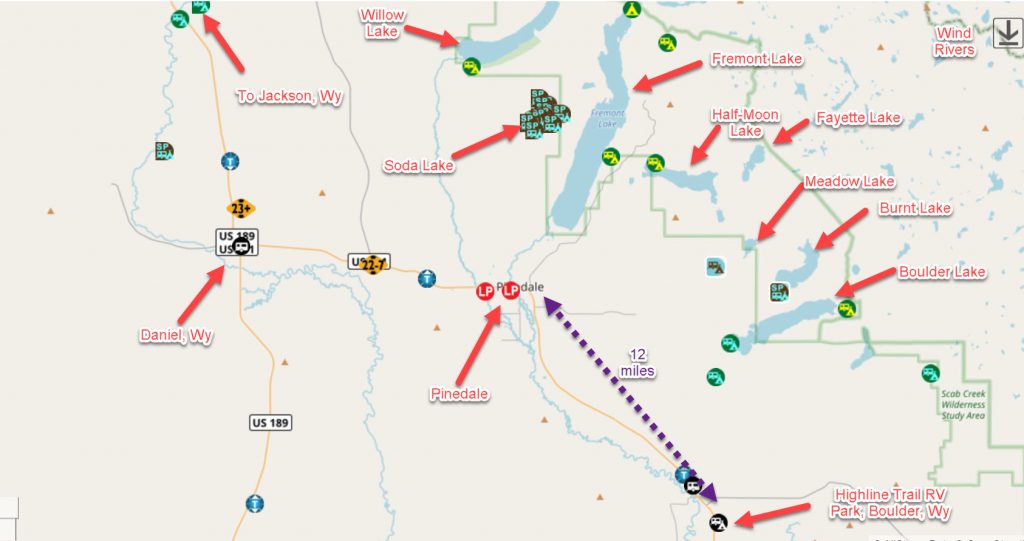
Local Rangers can be a GREAT resource…
When you do find a potential camping location, I encourage you to use the contact info provided by Allstays. Questions I often ask include whether my camper will fit AND if the roads present any challenges to accessing the camping area with my 35ft. fifth wheel camper.
You may also inquire about whether there are any water advisories in that region. For me, this always includes asking about “harmful algal blooms.” Most states have a “DEQ” website (department of environmental quality), it provides up to date monitoring info on this increasingly prevalent nuisance. This is particularly important for me as I’m a kayaker and tend to do so in flat water lakes.
The local rangers will also know if any amenities exist where you plan to camp. These may include nearby (or central) potable water hydrants, nearby RV dumps, and even if picnic tables and fire rings are provided.
What you NEED to have a successful DRY CAMPING experience with your RV Camper
Successful dry camping begins with sufficient (and if possible renewable) provisions along with a reliable energy source and energy storage. My “RV Solar Power – Portable and on a budget” post has some very helpful information.
Water
Water is of course the most basic essential for life. For my Concierge RV Buying Service clients, one of the first conversations we have is about the type of camping they plan to do and if boondocking is in the picture, we talk about fresh water tank capacities when discussing potential campers.
In addition to purchasing a camper with a LARGE fresh water tank (mine holds 80+ gallons), I carry several one gallon jugs. I find they’re easy to refill and serve to “feed” my countertop water filter. My water filter system also serves me in a pinch if I have to rely upon river or lake water as a water source.
As a real water saving tip… I tend to dry camp near small towns. Not only are they a place to refill my one gallon jugs, but many (thanks to state and federal monies) have really nice aquatic and recreation centers. These centers generally have a nominal admission charge (ask about the senior rates!) In addition to recreation facilities, they have modern showers! Thus, when dry camping, whenever possible I’m not using water from my camper’s fresh water tank to shower with. A few towns that come to mind include Pinedale, Wyoming; Cascade, Idaho; Dillon, Montana (the YMCA) and Rangely, Colorado. Incidentally, I will have a report on Rangely soon as I just spent 3 nights there.
Solar Power for RV Campers…
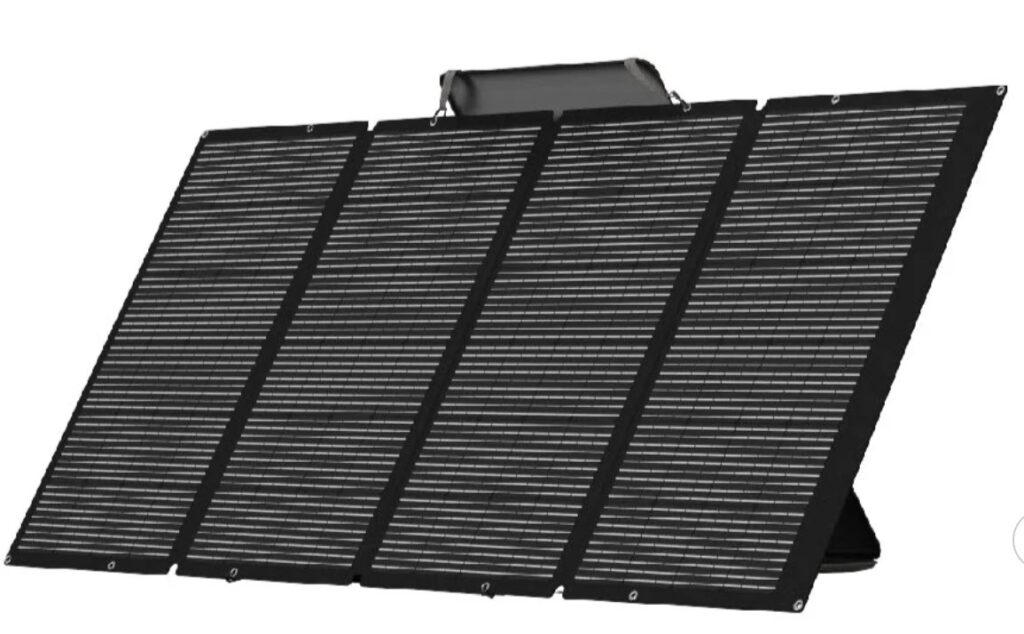
Beyond access to sufficient water, solar power is a BIG deal for any RV’er who plans to boondock. Solar power is a renewable energy source that will power your refrigerator, which means safe and fresh food. It can also power the furnace, hot water heater, maxx air fans, and even your laptop and cell phone! From my list here, you may gather I have modest expectations of solar. I do not ask it to run my air conditioner, microwave, or any high wattage AC appliances.
To summarize here and include some of the latest technology…
You’ll need either rooftop or portable solar panels. Between the two, I’m a fan of portable. I get into “the weeds” on this again in my “Solar Power on a Budget” post. Since that post has some mileage behind it, here are my latest recommendations…
Nurzviy 400 watt portable solar panel “suitcase” – foldable, highest efficiency, and GREAT customer support (you can actually reach the company with questions!) Aggressively priced and highly rated by serious reviewers.
Victron 30 amp MPPT solar charge controller – connects between the solar panels and your RV’s batteries (incidentally, I verified this with Nurzviy customer service – which IS quite responsive and helpful!)

Renogy 2000 watt PURE SINE WAVE inverter – Renogy costs a bit more, but hey, its Renogy (known for quality products.) Inverters connect to your batteries and convert 12 volt DC to 120 volt AC. With an inverter, you can run and charge AC appliances (NOT ALL!!) such as your laptop, phone, and even a TV (or two!) 2000 watts should be sufficient for most folks, but if you want a bit more “head-room”, here is a link to Renogy’s 3000 watt inverter.
The only thing you may want beyond the above is extender cables for the solar panels to move them around and/or a bit farther from your camper to capture the sun’s energy better (if you’re in the shade!)
Have some fun while you’re in the “outback”
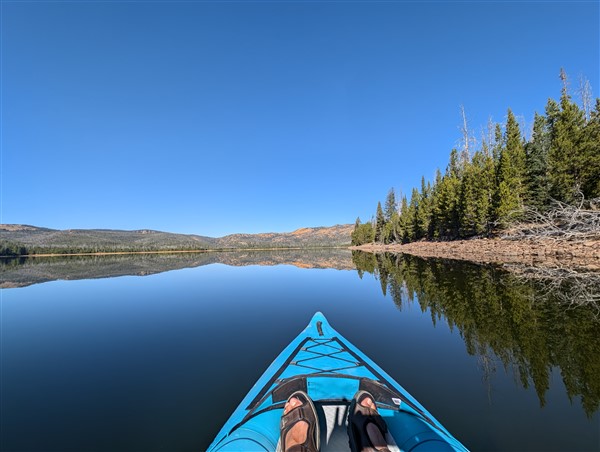
For me, that means putting my kayak into a lake (that ideally is very close to my campsite!) For me, it’s now the Aquaglide Chelan 120 (review coming soon.) Although I’ve only put it in water a few times so far, I can tell you I’m thoroughly impressed with this inflatable kayak. As an RV’er, its ideal to have an inflatable as transport is MUCH easier than a hard shell! Other travelers prefer SUP’s or other recreational (and aquatic) equipment!
Hey thanks for reading thus far! There’s more good stuff to come, but I wanted to share this… If you’re looking for a camper and you want a “guide by your side who also has your back” or if you want to sell and get the most possible for your camper with less hassle, check my Concierge RV Buying and Selling Service HERE and let’s talk!
Realistic Expectations
Know what you can (and can not) realistically power while dry camping. Yes, if you have a big generator, you can run EVERYTHING, but then you’ll be making more trips to town to refill fuel jugs! High wattage AC appliances will drain your resources. In order to avoid the need for air conditioning, I generally choose higher altitude camping, especially during the summer months.
Pinedale, Wyoming for example has several lakes within 15 – 30 minutes of town that offer FREE camping for up to 14 nights at elevations above 7500 ft. and the roads are “rv friendly” to reach these dispersed camping areas.
What about a cloudy day?
You can’t get around the laws of physics! Solar panels are virtually useless when its cloudy (or under tree cover.) The solution? Generators! I prefer dual fuel models (gasoline/propane.) Here is a 2500 watt Champion that is currently about $600. on Amazon. I have a Champion. It seems to be about as reliable and quiet as all the other “cheap Chinese generators.” In the past, I have owned Wen generators. I believe they’re about equal in performance and quality.
Tip: Be sure to clear all fuel (gasoline) out of the carburetor after use and before storing the generator. If not, it WILL create issues with running the generator. The good news is if you gum up the carb, you can still run on propane successfully. Should you gum up your carburetor, like I did, this cleaner has been highly recommended to me.
Communication
I still rely upon my Verizon phone and a Cricket “hotspot” Moxie for connectivity. Both are fine when boondocking AS LONG AS I have either a Verizon or AT&T cell tower signal. IF you go “far enough” off grid, your options are more limited. Certainly Starlink works almost anywhere (as long as trees don’t block the signal.) You may also consider a satellite phone – I have partnered with one of the premier companies in this industry to offer their satellite phones to those with a need. Learn more HERE.
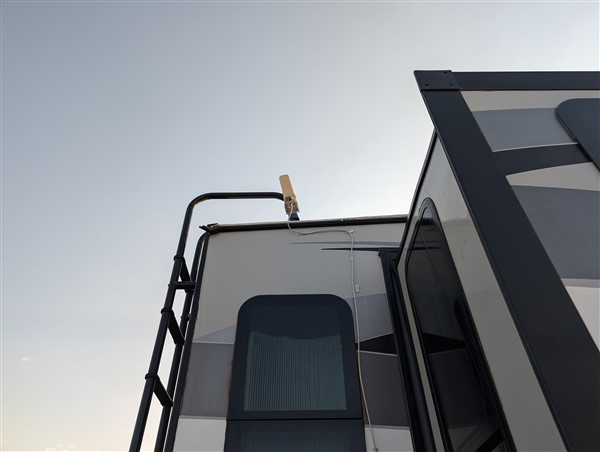
In marginal reception areas, my HiBoost is a vital tool to getting the MOST from any cell signal. My HiBoost is now over 3 years old. It is attached to the roof and IT JUST WORKS. I can also attest to their OUTSTANDING customer service – they are easy to reach and absolutely care about you getting the most out of their device!
Additional “tools of the trade” and suggestions…
Have mouse traps! Yep, those critters love to get into your camper. Carry bug spray and sunblock.
Have replacement parts! As a full timer, I carry a replacement mother board and thermistor for the fridge, a spare water pump and parts for the furnace (dinosaur board, limit switch, sail switch.) Most of which are available via Amazon.
A request…
Like my content? Please leave a comment below and/or click on the YouTube button on my video. Once the YouTube page loads, please leave a like/comment/subscribe to my video channel. It helps me to grow my reach – and you’re a part of that!
Also, want to be notified of upcoming posts? Please subscribe to my newsletter below…
